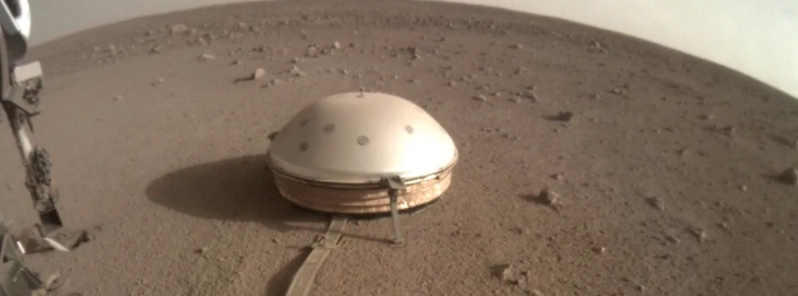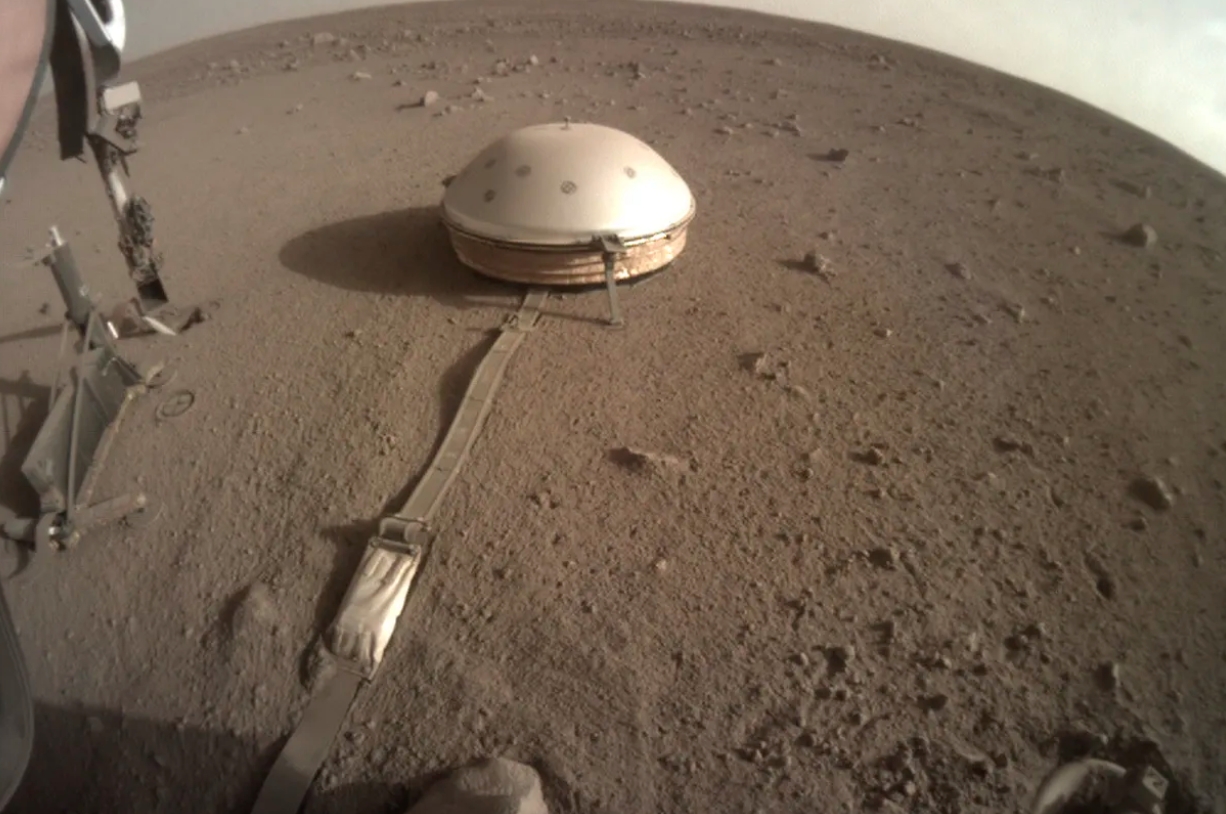InSight reveals surprising seismicity on Mars in its first continuous year of data

The SEIS seismometer package from the Mars InSight lander has revealed some surprises among more than 500 quakes detected so far on Mars in its first continuous year of data. The findings come from The Marsquake Service, part o the InSight ground team that monitors marsquakes and curates the red planet's seismic catalog.
Marsquakes are much smaller than earthquakes, with the largest event recorded at around M3.6. SEIS is able to detect such events because the background seismic noise on Mars can be lower than on Earth. To date, InSight has recorded over 500 marsquakes.
"For much of a Martian year, from around sunset until early hours, the Martian atmosphere becomes very quiet, so there is no local noise either," explained Savas Ceylan of ETH Zürich, who discussed some of the findings at the Seismological Society of America's 2021 Annual Meeting.
"Additionally, our sensors are optimized and shielded for operating under severe Martian conditions, such as extremely low temperatures and the extreme diurnal temperature fluctuations on the red planet."
Marsquakes come in two varieties: low-frequency and high-frequency.
"In terms of how the seismic energy decays over time, the low-frequency events appear to be more like earthquakes, in which the shaking dies away relatively quickly, while the high-frequency events are resembling moonquakes in persisting for longer periods."
Most of the events are high-frequency and happen hundreds of kilometers from the InSight lander. "It is not quite clear to us how these events could be confined to only high-frequency energy while they occur at such large distances."
"On top of that, the frequency of those events seems to vary over the Martian year, which is a pattern that we do not know at all from Earth," he added.

Image: InSight lander's dome-covered SEIS on Mars. Credit: NASA/JPL-Caltech
NASA’s InSight Mars Lander recently detected two strong, clear quakes with magnitudes of 3.3 and 3.1 on the Richter Scale. InSight has recorded over 500 Marsquakes to date! Learn more https://t.co/gqmRGOIg3k pic.twitter.com/OFcVvt3IAt
— NASA's Launch Services Program (@NASA_LSP) April 26, 2021
Only a few marsquakes have clear seismic phase arrivals, and all these originate from a sunken area called Cerberus Fossae, about 1 800 km (1 118 miles) from the InSight lander. It is one of the relatively youngest geological structures on Mars and may have formed from subsidence due to dike emplacement.
Past studies suggest extension mechanism may be the origin of the Cerberus Fossae quakes, however, "we have a long way in front of us to be able to explain the main tectonic mechanisms behind these quakes," said Ceylan.
Now, the biggest challenge for the InSight team has been "adapting to unexpected signals in the data from a new planet," he added. Although there were major efforts to protect SEIS from non-seismic noise, its data are still contaminated by lander and weather noises.
"We needed to understand the noise on Mars from scratch, discover how our seismometers behave, how the atmosphere of Mars affects seismic recordings, and find alternative methods to interpret the data properly," Ceylan explained.
It took the service a while to be confident in identifying the different event types, discriminating these weak signals from the rich and varied background noise, and being able to characterize these novel signals in a systematic manner to provide a self-consistent catalog."
Featured image credit: NASA/JPL-Caltech

Commenting rules and guidelines
We value the thoughts and opinions of our readers and welcome healthy discussions on our website. In order to maintain a respectful and positive community, we ask that all commenters follow these rules.